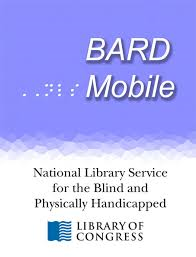Ever since National Braille Press announced that the 2014 Louis Braille Touch of Genius Prize for Innovation would be for an accessible app to promote braille or tactile literacy, I have been trying to imagine what kind of thing app developers might come up with that would qualify as “genius.” As a braille reader and an iPhone user, I have a number of apps on my phone that, in one way or another, involve braille.
I know firsthand how difficult  it can be to develop a braille-related app. In 2012, my employer, The National Library Service for the Blind and Physically Handicapped, began developing both an iOS and an Android app for playing audio and braille books on iDevices. We had a collection of more than 12,000 professionally translated and formatted braille books as well as thousands of issues of braille magazines and more were being added all the time. We wanted to provide a reading experience that was as similar as possible to reading a paper braille volume.
it can be to develop a braille-related app. In 2012, my employer, The National Library Service for the Blind and Physically Handicapped, began developing both an iOS and an Android app for playing audio and braille books on iDevices. We had a collection of more than 12,000 professionally translated and formatted braille books as well as thousands of issues of braille magazines and more were being added all the time. We wanted to provide a reading experience that was as similar as possible to reading a paper braille volume.
Our iOS app, of course, got its accessibility from Apple’s VoiceOver. One of our first challenges for this version was realizing that the braille on an iDevice was simply a braille version of whatever the speech had spoken. There was no regard for formatting. We told our developer that we wanted users to be able to see things like multiple blank spaces and blank lines on their braille display. This took considerable finesse to accomplish. The challenges were numerous but with a considerable amount of effort; our developer was able to overcome almost everything and produced a braille-reading app that we are all enormously proud of.
The challenges for the Android app were even greater. We have not yet been able to produce an acceptable braille reading experience. Our work on the Android version of the app continues.
I have served on committees responsible for administering the Touch of Genius Prize since its inception. Each year, as we review the latest crop of entries, I hold my breath waiting to see the results of someone’s genius applied to braille. But, up until now, these folks have had the entire range of the physical world to draw upon. Does an app developer have such options? I suppose smartphones can be connected to things.
In the iOS world, we already have a good app for braille reading and we have several good apps for inputting braille. But there must be more. If an app developer is going to display text, they will need to be mindful of the relevant aspects of the braille code and think hard about how the braille will be used. Will the user need a braille display? What could be done that didn’t require a braille display? There are vibrations but they are sequential; there’s speech but that sequential as well. Hmmm, what could it be?
Perhaps an app could AirPrint to an embosser—send it a map or the results of my efforts at drawing. Maybe someone will make a modern-day version of the Optacon—a 1970s device that allowed a blind person to read print with a vibrating, tactile display—and, in my opinion, the greatest device that has ever been developed for blind people.
So, the challenge is definitely on. But, the more I think about it, the more I realize that what I really want is a braille version of Angry Birds!
